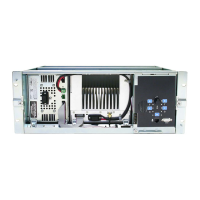TB8100 Service Kit User’s Manual Subaudible Signalling 7
Subaudible Signalling
The TB8100 base station can transmit and receive using subaudible signalling.
Both CTCSS
tones and DCS codes are supported. CTCSS attaches a
subaudible tone to the carrier signal. DCS attaches a digital code. A receiver
programmed with a particular tone or code will not unmute unless that tone or
code is presented with the RF signal.
CTCSS tones and DCS codes are referred to collectively as subtones. Subtones
make it possible for different groups of users to operate on the same channel
without hearing or disturbing each other. The base station and the radios that
use it need to be programmed with the same subtone(s). In some parts of the
world, the use of subtones is regulated.
Assigning
subtones
You assign a receive and a transmit subtone to a channel by editing the channel
table. When the base station is operating on that channel, it opens the receiver
gate to signals with the receive subtone and transmits using the transmit
subtone.
If the base station has a license for the Advanced Profiles and Task Manager
feature set, you can use a custom signalling profile to assign up to 16 subtones
to a single channel. The receiver recognizes any of the assigned tones and
responds according to its configuration for the particular tone. It can transmit
the signal (encoding it with the same subtone), transmit the signal (with a
different subtone), or carry out a Task Manager action. You can also add an
audible reminder tone to the transmissions (for example, for customers who are
behind with their payments). The 16 subtones can contain CTCSS tones and
DCS codes.
Reverse tone
burst/end tone
The base station always transmits a DCS end tone for muting the receive audio,
but transmitting a CTCSS reverse tone burst is optional and configurable.

